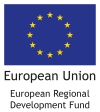Coast4us project resulted in 8 sustainable development plans for pilot regions around the Baltic coast
The aim of the project Coast4us was to develop a holistic and inclusive approach to the spatial and community development planning process by involving stakeholders of different interests to create sustainable marine and coastal development plans at different levels, including at community grassroots level.
During this project, partners worked in three main, interlinked areas:
- mapping and collecting data;
- the planning process and the development of plans;
- evaluation of the tools and methods used.
Mapping and assessment of values (e.g. ecological, cultural and social) as well as mapping of the present use of resources and local demands for economic development was done. Planning tools (e.g. GIS, planning IT tool, LEA and Smart City Planning) were developed i to facilitate the planning process. Meeting points, both physical and web-based, were established.
The main results of the Coast4us project were 8 sustainable development plans for pilot regions around the Baltic coast:
- Arkösund: A Future Analysis of Arkösund archipelago THE ROAD TOWARDS A SUSTAINABLE PLACE 2030 (Arkösund is a small community with 160 year-round habitants, 2000 summer residents and up to 40 000 tourists/visitors, 50 km from Norrköping)
- Bergön: Future Analysis for Bergön (Bergön is an old coastal artillery base which is situated on an island in Sweden that is part of the Helcom MPA (marine protected area) area with high nature values, especially shallow water area that is included as part of the pilot area).
- Ekön: Detailed plan for properties in Gryt (Ekön is a nature preserve located in the archipelago of Gryt in east Sweden of the municipality of Valdemarsvik).
- Mariehamn and Sund: Summary Proposal for a Sustainable Coastal Zone (Mariehamn is an urban area in Aland with many buildings and concrete roads where the challenge was run offs from of the storm water; Sund is an agricultural dominated rural area where the challenge is are nutrient run off from the land to the water and many lakes and ditches are highly affected by eutrophication.
- Kökar: Our Habitability: Sustainable Development of Kökar 2020-2030 (2050) (Kökar is a small island in Aland with 236 all-year inhabitants and 32,000 visitors/year). The goal was to make a sustainability plan for the island.
- Saarema: Master Plan. (Saarema municipality in Estonia consisting of 4 bigger islands: Saaremaa, Abruka, Vilsandi and Kõinastu and lots of smaller islands, with 1300 km long coast line of Saarema island only). The main aim was to generate valuable input material for the Saaremaa Municipality´s general plan regarding coastal area region.
- Tūja: Village Development Plan 2020-23 (Tūja is a village 33 km from the county centre Salacgriva and 75 km from Riga in Latvia).
- Garupe: Garupe Village Development Plan 2020-2024 (Garupe is one of the most growing villages in the municipality of Carnikava, Latvia). The goal was to develop a sustainable, holistic and locally adapted marine and coastal zone plan for Garupe village and agree on priority activities.
A key activity, and new practice developed in the project, was informal local society involvement in the planning process, inspiring and motivating people to engage and act, as well as to strengthen collaboration between local communities and local governments. In that regard capacity and skills of various NGO’s, local communities and local governments were improved regarding development planning and society involvement issues. In addition, the scientific studies put the work of the project in a broader context and pinpointed important parts of the processes.
Project results, partners experience and recommendations are available in the project story map which is available here.
The main results of the Coast4us project were 8 sustainable development plans for pilot regions around the Baltic coast. During this project, partners worked in three main, interlinked areas:
- mapping and collecting data;
- the planning process and the development of plans;
- evaluation of the tools and methods used.


